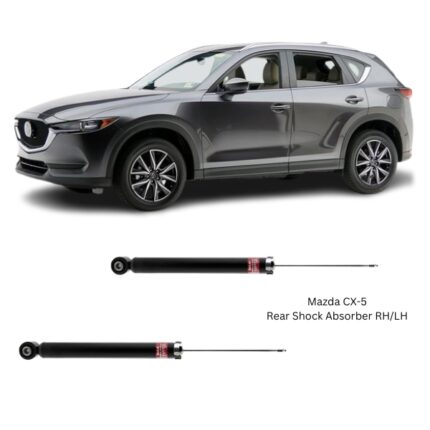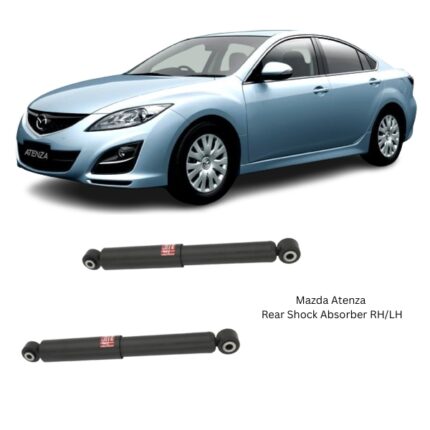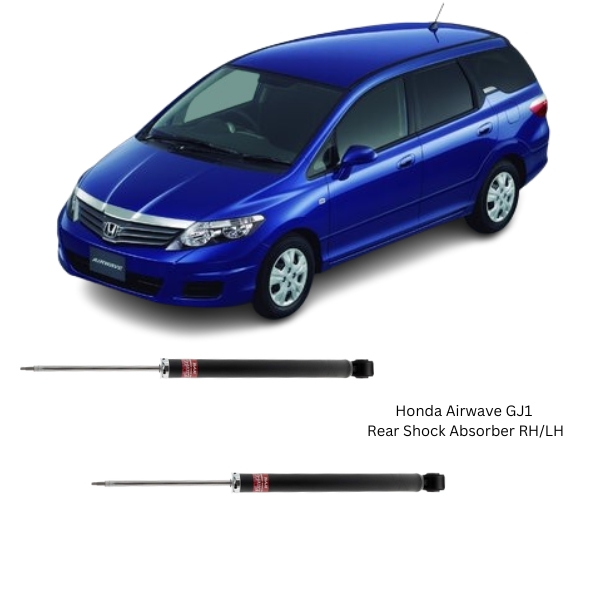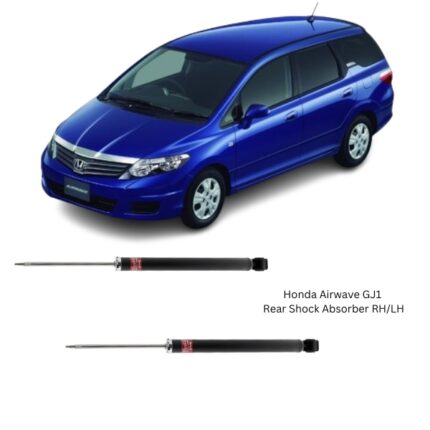Get Honda Airwave GJ1 Rear Shock Absorber RH/LH 3430046 in Kenya
The rear shock absorber, installed on both the right-hand (RH) and left-hand (LH) sides of a vehicle, is a fundamental component of the suspension system. Though relatively small compared to the engine or transmission, it plays a central role in ensuring road safety, vehicle stability, passenger comfort, and overall driving performance. Every movement at the rear axle passes through the shock absorbers, making them vital for controlling how the vehicle behaves on smooth highways, bumpy roads, or during sudden maneuvers.
1. Purpose of Rear Shock Absorbers
The core purpose of a rear shock absorber is to control suspension movement. When a vehicle encounters bumps or potholes, the suspension springs compress and expand. Without a shock absorber, these springs would bounce uncontrollably, leaving the vehicle unstable. The shock absorber dampens this motion by converting kinetic energy into heat through hydraulic fluid, which is then dissipated.
Key functions include:
-
Ride Comfort: Reduces vibrations and harsh jolts from uneven roads.
-
Stability: Minimizes swaying, leaning, or rolling when cornering.
-
Traction: Keeps tires in constant contact with the road for grip.
-
Braking Support: Reduces rear lift during sudden braking, improving stopping performance.
-
Load Management: Stabilizes the rear end when passengers or cargo are loaded.
Simply put, rear shock absorbers keep the vehicle balanced, comfortable, and predictable.
2. Construction and Design
Though compact, rear shock absorbers are precision-engineered parts built to handle continuous stress. Their main components include:
-
Outer Cylinder/Body: Houses hydraulic fluid and supports the structure.
-
Piston and Rod: The piston, attached to a hardened steel rod, moves inside the cylinder to regulate fluid flow.
-
Valves and Orifices: Small precision holes and valves that control how fluid flows, determining the damping rate.
-
Seals: Prevent fluid leakage and keep dirt out.
-
Bushings: Rubber or polyurethane mounts at each end that absorb vibration and allow secure attachment.
Rear shock absorbers are typically available in twin-tube or mono-tube designs. Twin-tube shocks have an inner working chamber and an outer reservoir, while mono-tube shocks use a single cylinder with gas pressure for higher performance and better heat dissipation.
3. Types of Rear Shock Absorbers
Depending on the vehicle’s use, different types of rear shock absorbers are available:
-
Hydraulic (Oil-Filled): Standard shocks using hydraulic fluid. Reliable and cost-effective.
-
Gas-Charged: Contain pressurized nitrogen gas to prevent foaming and maintain consistent damping. Ideal for demanding conditions.
-
Heavy-Duty: Built stronger with thicker materials, suitable for vehicles carrying heavy loads or used on rough terrain.
-
Adjustable: Allow manual or electronic tuning of damping levels for comfort or performance.
-
Air Shocks: Use air chambers to adjust ride height and improve load leveling, common in SUVs and larger vehicles.
The choice depends on whether the vehicle is used mainly for everyday commuting, off-road driving, or heavy-duty hauling.
4. RH and LH Specific Fitment
The designation of RH (Right-Hand) and LH (Left-Hand) shock absorbers is not just labeling—it is crucial for proper fit and function. Many designs are side-specific to match the suspension geometry and mounting positions.
Using the correct side ensures:
-
Proper alignment with the suspension arms.
-
Balanced damping across both sides of the axle.
-
Correct mounting orientation.
-
Prevention of uneven wear or handling issues.
For best results, both the RH and LH shocks should be replaced at the same time.
5. Signs of Worn Rear Shock Absorbers
Shock absorbers deteriorate gradually, which makes their failure harder to notice until performance is significantly compromised. Warning signs include:
-
Excessive Bouncing: Vehicle continues to bounce after hitting a bump.
-
Poor Handling: Feels unstable when cornering or changing lanes.
-
Braking Instability: Rear end rises too much under braking.
-
Uneven Tire Wear: Tires show cupping or patchy wear.
-
Fluid Leaks: Oil dripping from the shock absorber body.
-
Unusual Noises: Clunking or knocking sounds from the rear suspension.
Ignoring these signs leads to unsafe driving, increased wear on tires, and damage to other suspension parts.
6. Replacement and Maintenance
For safety and performance, rear shock absorbers must be replaced in pairs (RH and LH together). Replacing only one side creates imbalance and uneven damping.
Replacement best practices include:
-
Inspecting and replacing worn bushings or mounts.
-
Tightening all bolts to manufacturer torque settings.
-
Inspecting suspension springs, since weak springs reduce shock efficiency.
-
Performing wheel alignment after replacement to maintain stability.
-
Regular inspection every 20,000–30,000 km, especially on rough roads.
Proper installation and maintenance extend the life of both the shocks and the entire suspension system.
7. Benefits of Healthy Rear Shock Absorbers
When rear shocks are in optimal condition, the benefits are immediate:
-
Safer Driving: Better control during braking, turning, and lane changes.
-
Improved Comfort: Smooth, stable ride for driver and passengers.
-
Extended Tire Life: Even tire wear thanks to consistent road contact.
-
Lower Vehicle Stress: Reduced strain on springs, chassis, and other suspension components.
-
Confidence: Vehicle feels predictable, stable, and enjoyable to drive.
These advantages highlight that shock absorbers are not just about ride quality but also directly tied to safety and cost savings.
8. Durability and Materials
Modern rear shock absorbers are built for long service life. High-strength steel, corrosion-resistant coatings, and hardened piston rods ensure durability. Gas-filled designs resist overheating and maintain performance under heavy use. With proper care, quality shocks can last tens of thousands of kilometers even under challenging road conditions.
Follow us on Facebook for more parts.





Reviews
Clear filtersThere are no reviews yet.